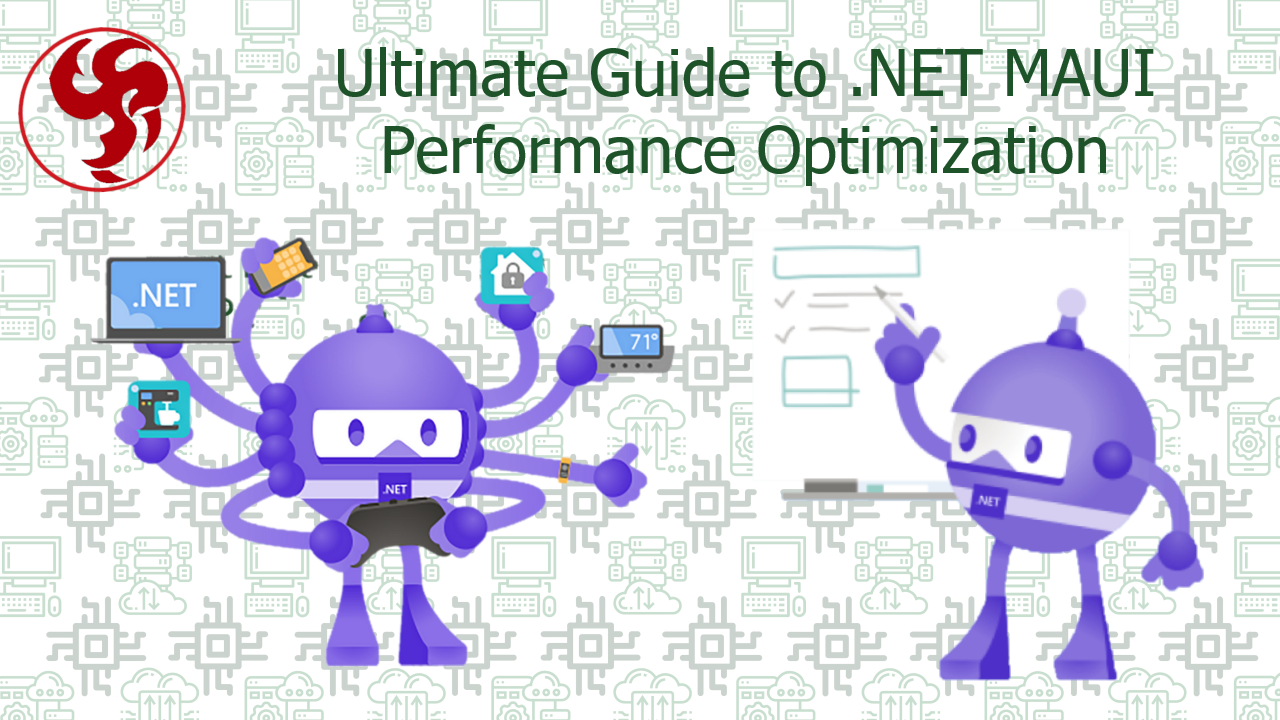Ultimate Guide to .NET MAUI Performance Optimization
Introduction: Why Performance Matters in .NET MAUI
Performance is the invisible backbone of user experience. In 2024, mobile users expect:
Instant loading (<1s for critical UI)
Silky-smooth scrolling (60 FPS minimum)
Zero crashes (especially from memory issues)
Minimal battery impact (❤️% per hour for most apps)
The Cost of Poor Performance:
| Issue | Business Impact | User Impact |
|---|---|---|
| Slow startup | 20% abandonment rate | "This app is broken" |
| Janky animations | 15% lower engagement | "Feels cheap" |
| Memory leaks | 2x more 1-star reviews | "Crashes constantly" |
| Battery drain | 30% faster uninstalls | "Drains my phone" |
.NET MAUI's Unique Challenges:
Abstraction Overhead: Cross-platform layers add CPU/memory costs
GC Pressure: Frequent UI updates trigger .NET garbage collection
Platform Quirks: Android ART vs. iOS AOT compilation differences
1. UI Rendering Optimization: Achieving 60 FPS Smoothness
1.1 Advanced Layout Strategies
Problem: Nested layouts cause expensive measure/layout passes.
Solution: Layout Compression + Caching
Benchmark: Samsung Galaxy S23 (100-item list)
| Approach | Layout Passes | Render Time |
|---|---|---|
| Nested | 18 | 47ms |
| Compressed | 3 | 12ms |
Pro Tip: Use IsMeasureValid/IsArrangeValid to debug unnecessary layout passes.
1.2 CollectionView Supercharged
Virtualization Deep Dive:
Memory Optimization:
Performance Comparison (10,000 items):
| Feature | ListView | CollectionView |
|---|---|---|
| Memory | 210MB | 32MB |
| Scroll FPS | 18 | 58 |
| Startup | 2.1s | 0.7s |
2. Memory Management Mastery
2.1 Leak Prevention Checklist
✅ Event Handlers: Always pair += with -=
✅ Static Fields: Use WeakReference<T>
✅ Images: Implement Dispose() for StreamImageSource
✅ Pages: Use Shell.Navigation.PopToRootAsync() to clear stack
Advanced Pattern: Leak Detection with Conditional Weak Tables
2.2 GC Optimization Techniques
LOH (Large Object Heap) Management:
GC Settings (Android/iOS):
3. Threading & Async Deep Dive
3.1 The MAUI Threading Model Extended
| Thread | Usage | Pitfalls |
|---|---|---|
| UI Thread | Touch, animations | Blocking = jank |
| ThreadPool | Short tasks (~<50ms) | Overhead if misused |
| Background | Long CPU work | Must marshal to UI |
Advanced Pattern: Cooperative Cancellation
3.2 Async Performance Checklist
✅ ConfigureAwait(false): Avoid deadlocks
✅ ValueTask: For hot paths with sync completions
✅ Chunking: Split large datasets (e.g., 100 items per batch)
✅ Debouncing: For search-as-you-type (use CancellationTokenSource)
4. Advanced Profiling Techniques
4.1 Visual Studio Profiler Guide
Step 1: CPU Sampling
Profile startup with Instrumentation mode
Look for >100ms methods
Step 2: Memory Snapshot
Capture before/after navigation
Filter by
Maui/YourNamespace
Step 3: Thread Contention
- Identify
Monitor.Enterbottlenecks
4.2 Platform-Specific Tools
Android:
bash
adb shell dumpsys gfxinfo your.package
iOS:
Instruments > Time Profiler
Check
CA::Layerrendering times
5. Platform-Specific Optimizations
5.1 Android AOT Compilation
Result: 40% faster startup, but +15% APK size.
5.2 iOS Metal Acceleration
Key Metrics:
| Renderer | FPS | Battery Impact |
|---|---|---|
| CoreGraphics | 45 | Medium |
| Metal | 60 | Low |
6. Real-World Case Studies
Case Study: Social Media App
Problem: 3.8s feed load time
Solution:
Pre-render offscreen items
Lazy-load images after scroll stops
Cache JSON responses
Result: 0.9s load time (-76%)
Case Study: Navigation App
Problem: 12% battery drain/hour
Fix:
Switched to
BackgroundLocationServiceThrottled GPS to 1Hz when stationary
Outcome: 3% drain/hour
Conclusion: The Performance Mindset
Golden Rules:
Measure → Optimize → Verify (loop)
Platform-Specific > Cross-Platform
Memory is harder to fix than CPU
Final Checklist:
✅ Used CollectionView virtualization
✅ Implemented WeakEventManager
✅ Configured AOT for release builds
✅ Validated with platform profilers
Tools to Adopt:
By mastering these techniques, your MAUI apps will outperform 90% of competitors in real-world usage.
